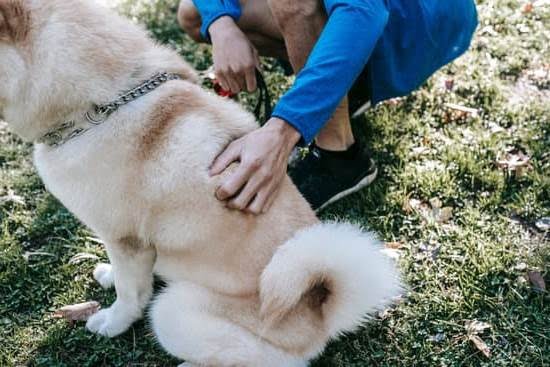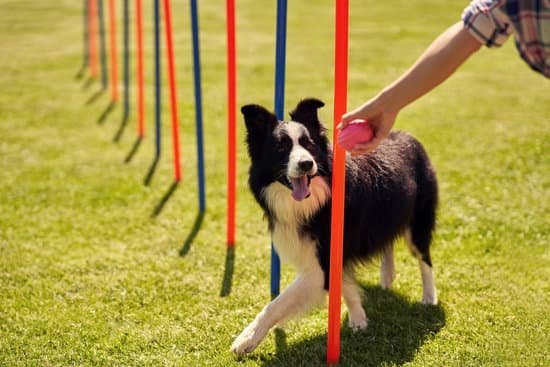Introduction
Training toys for dogs can provide numerous benefits for pet owners. Not only do they offer a fun and interactive way to keep your pup entertained, but more importantly, they help with dog behavior modification, teaching obedience and helping owners understand their pup. Training toys can also reduce stress for both the pet and its owner by providing constructive ways to increase focus and relieve boredom. Additionally, training toys can improve the bond between animals and their people as well as enhance a dog’s cognitive abilities, which is important for overall mental health.
One of the most common uses of training toys is to help teach obedience skills in puppies or adult dogs. Dog owners are able to recreate situations that would be difficult or complicated in reality without the toy. For example, if you wanted your pup to practice getting used to people coming in and out of your home or practicing their stay command when people visit, this could easily be accomplished by using a training toy. Additionally, certain toys such as food puzzles require a dog to engage in activities directed at solving the puzzle which serves to sharpen the dog’s cognitive abilities such as problem-solving skills, thus helping them stay mentally active.
Ultimately, training toys help dogs learn tasks quickly while keeping them stimulated and engaged so they don’t get bored or distracted during training sessions. Furthermore, these tools enable owners to spend quality time with their pups while teaching them valuable lessons through positive reinforcement techniques. By being consistent with positive reinforcement methods such as verbal praise and treats immediately after a task has been completed successfully using one these tools will make the session far more productive and rewarding for both the person and their pet!
Training Toys
Training toys offer pet owners an easy and efficient way to teach their dogs basic commands and obedience lessons. They also provide an effective tool for puppy socialization by helping owners encourage positive interactions between the pup and other people or animals.
The types of training toys available vary widely, from interactive games that simulate a hunt, to treat puzzles that test a dog’s problem-solving skills, to basic objects that can be used in traditional obedience exercises like fetch. Regardless of which type of toy is chosen, all serve to reinforce certain behaviors in canines without the need for sticks or harsh correction.
One benefit of using training toys is the opportunity for bonding time with the dog. Using these items helps create trust between man and beast as the owner rewards their faithful friend for completing tasks correctly. Additionally, such activities are enjoyable for both parties and can increase levels of alertness in the animal when distraction-filled environments arise.
In terms of shaping better behavior in dogs, training toys provide just as much structure as any other reward system thanks to their ability to teach discipline with every available opportunity. Owners who use them will often discover that their furry companion is much more able to focus on learning new skills while ignoring undesirable distractions outside their makeshift ‘classroom’. Once perfected, those same behaviors learned through playtime transfer into real world situations where unwanted actions are no longer accepted – something invaluable to a young pup!
Making Sure It’s Safe to Use Training Toys with Puppies & Adult Dogs
If you’ve been researching training toys for your dog, chances are you’ve come across a wide variety of options. From interactive activity sets to pull-tug toys and many more, there are certain considerations that you should make sure of before using any toy with either a puppy or an adult dog.
For puppies, it is important to research potential dangers in toys such as small pieces that can pose a choking hazard. If the toy is meant to be chewed or bitten by the puppy, also make sure that it is made out of non-toxic materials and not too sharp or rigid so as to avoid damaging their developing teeth and mouth. Additionally, you want to avoid any toy with extra soft stuffing to prevent possible ingestion which could cause intestinal blockage if swallowed by mistake.
On the other hand, for an adult dog, you should also make sure that it is safe for them to use before purchasing any new toy. You will have to assess whether the texture is durable enough not just for dogs who like tugging and pulling on toys but those who might chew heavily or excessively bite down while playing. Also keep an eye out for puncture hazard materials like hard plastic or rubber and even if not lethal they may poke eyes or damage paws when playing. Last but not least make sure that no matter what type of toy you plan on buying your evaluate if it contains little parts that could end up in your pup’s digestive system by mistake either due to heavy chewing or tearing at the piece of fabric or stuffing contained within said toy
Stimulating Training Toys For Any Dog
Training toys are a great way to stimulate your dog’s mind and body. Not only do they provide welcomed physical activity, but they can help with cognition-enhancing activities, improve the bond between you and your pet, add mental enrichment, reduce boredom and provide an opportunity for reward-based training. Training toys come in many shapes and sizes, from interactive puzzles and educational games to treat- or feeders, chew toys and much more — there’s something for every canine’s needs. For example, interactive twist-toys are excellent for teaching problem-solving skills; stuffing toys like Kongs are ideal for giving treats; bobbing discs require skill; and slow feeders increase the difficulty of eating while providing resistance that some dogs really enjoy.
In addition to the types of training toys mentioned above, there are a lot of other options available that can provide different levels of stimulation and entertainment depending on how active your pup is feeling. For example, feeding mats with hidden pockets promote instinctive behaviors such as search & find while challenging their agility. An oversized jigsaw puzzle rewards them with treats upon completion (as long as it happens within a safe timeframe). Automatic ball launchers offer hours of fetch without you having to get involved (just be sure to supervise). Or try out adjustable ‘cognitive’ puzzles that force pets to rely on their sense of smell to solve riddles before being given rewards. Whatever type of toy you choose for your pup, adding them all into your routine will keep them engaged — physically, mentally and emotionally — providing a better balanced environment for those long days spent at home!
Making It Fun
When it comes to training your dog, it can be a challenge to stay motivated. No matter how cute and cuddly your pooch might be, boredom is a real and deadly foe. Sadly, tedious repetition of commands is one of the best ways to teach your pet – not necessarily the most exciting. That’s why having plenty of training toys for dogs on hand is key.
Training toys are specifically designed to help keep both you and your pup motivated while teaching new skills in a fun and engaging way. Toys like puzzle games, interactive treats, balls with valves, flirt poles and treat launchers require different levels of participation from each participant involved in playtime – making it both challenging and rewarding. Not only will these activities keep things varied and stimulating, but they’ll also give you the chance to reinforce good behavior with treats or rewards as desired!
Moreover, when using robots or remote-controlled vehicles with varying functions such as physical movement, sound sequences and unpredictable patterns it encourages intellectually stimulating playtime which dogs love! This type of play offers an exciting avenue for learning about cause-and-effect actions/behaviors within simulated environments (versus real life). Additionally, engaging in obstacle courses or agility drills throughout different playing surfaces yield health benefits from staying physically active while training. Setting up DIY challenges or hikes gives your canine friend the opportunity to sniff out objects or explore natural environments – another bonus activity that positively stimulates all their senses!
Factors to Consider When Shopping For The Right Toy For Your Dog
1. Age: There are specialized toys for different ages of dogs so it’s important to find a toy that is suitable for your pet’s age range. Puppy toys, for example, should be soft and durable as puppies tend to chew more than adult dogs.
2. Activity level: It’s important to choose a toy that fits with your dog’s activity level. For high-energy breeds such as German Shepherds and Labradors, select a toy that promotes active play such as flying discs, balls or pull toys. For calmer breeds like Poodles and Yorkies, look for toys intended for cuddling and snuggling like plush animals or stuffed bones.
3. Size: Make sure the toy you purchase is appropriate size-wise for your pup by consulting product labels or fit guides on toy producers websites; larger dogs will require larger toys than small breed pups in order to avoid swallowing small parts or choking hazards
4. Difficulty: Respect the challenge level of the game you’re introducing to your dog when selecting training toys; an overly easy puzzle will reduce interest quickly, while a super challenging one can lead to frustration in the pup. Consider if there are adjustable levels of difficulty available within the toy type.
5. Durability: To ensure you get the most bang out of your buck and limit frustration with torn up pieces, it’s important that the toy is made of materials sturdy enough handle some rough playtime sessions (in case your pup decides those stuffed animals aren’t just to be cuddled).
Concluding Thoughts
Training toys can be a great way to help your dog have a better quality of life. Not only can these toys help develop important skills for your canine friend, but also provide an engaging and interactive experience. By teaching your pup these essential behaviors, you are setting them up with the foundation they need for more advanced skills and activities like obedience training and agility. With regular training, you can help maximize your pup’s physical and mental wellbeing. Additionally, when used correctly, toys help further reward positive behaviors while encouraging important problem-solving abilities.
In addition to providing physical activity and mental stimulation, using training toys can also strengthen the bond between you and your furry companion. As you teach your doggo new exercises or games with their toys, you will both become closer as they look to you for guidance throughout the process. Training is a safe way to make sure that they interact with other pups without running into any dangerous situations. This method allows owners to not just house-train pups but also prevent boredom that could lead to destructive habits later on down the line.
Overall, training toys are an essential tool in helping raise well behaved dogs who have strong bonds with their owners and consistent routines that improve their quality of life. They offer not only an enjoyable way for pets to learn how to behave in many different settings but also rewards those good behaviors with subtle reinforcement through playtime activities or treats. The use of such tools has been proven to greatly enhance both a pup’s physical fitness and mental capability while promoting positive intrapersonal relationships within households where multiple animals live together harmoniously too!

Welcome to the blog! I am a professional dog trainer and have been working with dogs for many years. In this blog, I will be discussing various topics related to dog training, including tips, tricks, and advice. I hope you find this information helpful and informative. Thanks for reading!





